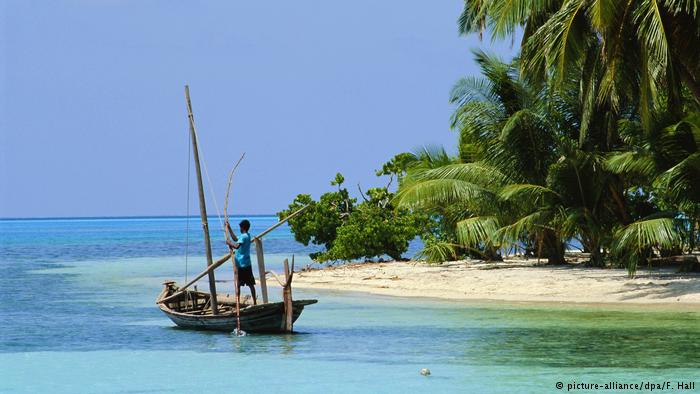Biodiversity Collapse: earlier than expected
July 27, 2018 | Expert Insights

The world's tropics face immediate biodiversity collapse unless drastic steps are taken, according to a new study. The study suggests environmental issues are even worse than previously thought.
Background
According to the United Nations Environment Programme (UNEP), biodiversity typically measures variation at the genetic, the species, and the ecosystem level. The United Nations designated 2011–2020 as the United Nations Decade on Biodiversity.
The notion of an international convention on biodiversity was conceived at a United Nations Environment Programme (UNEP) Ad Hoc Working Group of Experts on Biological Diversity in November 1988. The Convention on Biological Diversity (CBD), known informally as the Biodiversity Convention, is a multilateral treaty. The Convention has three main goals- the conservation of biodiversity, the sustainable use of its components and the fair and equitable sharing of benefits arising from genetic resources.
CITES (the Convention on International Trade in Endangered Species of Wild Fauna and Flora) is a multilateral treaty that entered into force on 1 July 1975. Its aim is to ensure that international trade in specimens of wild animals and plants does not threaten the survival of the species in the wild.
The IUCN Red List is a system of assessing the global conservation status of species. According to the IUCN list, the Dodo, Javan tiger, Easter Cougar, Blackin Cisco and the California Grizzly Bear are in the list of extinct species. Species that face an extremely high risk of extinction in the immediate future like the Asiatic cheetah, lion, bactrian camel, Arabian leopard and chinese alligator are on the critically endangered list.
Analysis
A major scientific study in the journal Nature was carried out by a team of international researchers on the theme ‘The future of hyperdiverse tropical ecosystems’. The study has concluded that “ a global biodiversity collapse is imminent unless we take urgent, concerted action to reverse species loss in the tropics.” The study is the first high-level report on the state of all four of the world´s most diverse tropical ecosystems such as, tropical forests, savannas, lakes and rivers, and coral reefs.
The study carried out by a multicultural set of scientists was one the reasons for diverse insights and a holistic report on the state of global biodiversity. The study has pointed out that across tropical ecosystems, many species face the ‘double jeopardy’ of being harmed by both local human pressures, such as overfishing; and droughts or heat waves linked to climate change.
Dr. Alexander Lees, from Manchester Metropolitan University explained that while over-harvesting of wildlife was responsible for the annual loss of millions of highly trafficked animals such as pangolins, it also affected many other less-well known species. He said, “Even many small songbirds are at risk of imminent global extinction due to their capture for the pet trade in South-east Asia. The rainforests where they live are increasingly falling silent.”
The declining health of tropical ecosystems is closely linked to the well-being of millions of people across the planet. Lead author Professor Jos Barlow from Lancaster University said: “Although they cover just 0.1% of the ocean surface, coral reefs provide fish resources and coastal protection for up to 200 million people.“
While the conclusions made by the study are bleak, it has outlined the actions that are needed to turn the health of these vital ecosystems around. The researchers have called for effective conservation interventions to preserve and restore the tropical habitats that have been the home and last refuge to the overwhelming majority of Earth’s biodiversity for millions of years.
Professor Barlow said,“The fate of the tropics will be largely determined by what happens elsewhere in the planet. While most of us are familiar with the impact of climate change on the polar regions, it is also having devastating consequences across the tropics — and without urgent action could undermine local conservation interventions.”
One of the authors on the report pointed out that as a powerful economic driver of change, the role of developed countries was also felt deeply in the tropics. Dr. Toby Gardner, Senior Research Fellow at the Stockholm Environment Institute highlighted the importance of innovation. He said, “The past decades have seen a boom in proposals, innovations and insights about the science, governance and management of tropical ecosystems from remote sensing and big data to new legal frameworks for business. The clock is ticking for these proposals and insights to be properly tested.”
Dr. Joice Ferreira, a researcher in the team from the Brazilian agricultural research institution Embrapa, emphasized that, “An international approach to science is vital to help avoid the loss of tropical biodiversity.”
Assessment
Our assessment is that strategies of biodiversity conservation must address the underlying drivers of environmental change. We feel that governments and international organizations must increase the percentage of environmental aid as it remains static in the recent years. We believe that the aid must be directed towards strengthening the capacity of research institutions in the tropics and in overcoming related issues of climate change, deforestation and be used to promote sustainable use of resources.








Comments